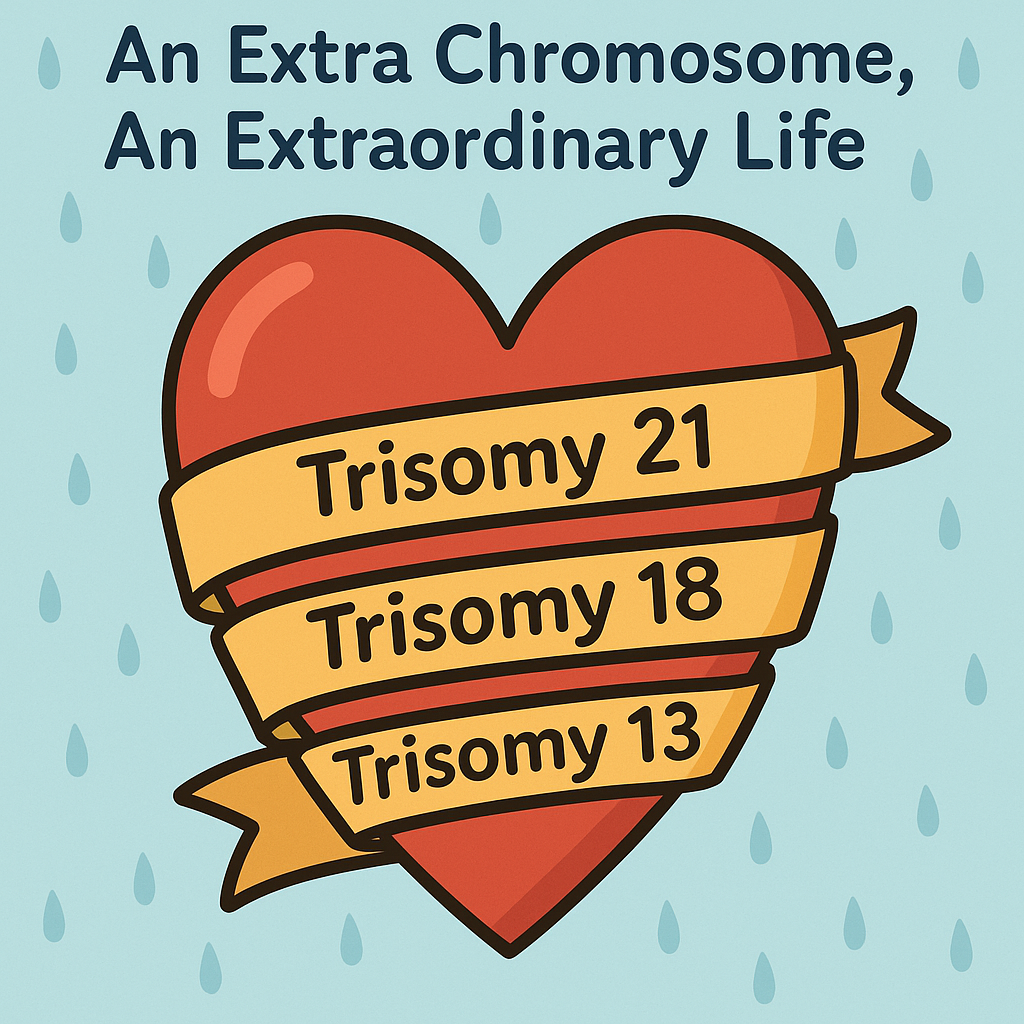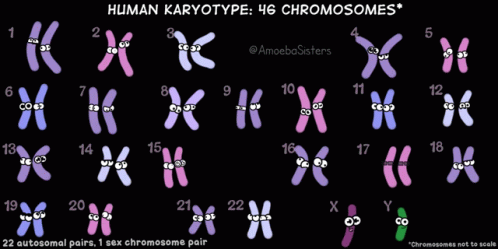🧬 An Extra Chromosome, An Extraordinary Life: Understanding Trisomy 21, 18, and 13

Health & Sciences | The Varrock Street Journal
Good morning, readers! This week, we turn our attention to some of the most profound conditions seen in pediatrics: chromosomal trisomies. An extra chromosome can shape a child’s body, health, and experiences, but it doesn’t define their worth.
Today, we'll explore Trisomy 21 (Down syndrome), Trisomy 18 (Edwards syndrome), and Trisomy 13 (Patau syndrome)—what they are, how they're diagnosed, the challenges they bring, and the unique lives that follow.
🧬 What Is a Trisomy?
Humans normally have 23 pairs of chromosomes. A trisomy happens when an individual has three copies of a chromosome instead of two. This tiny difference can cause significant developmental and physical changes—some mild, some profound.

💙 Trisomy 21 (Down Syndrome)
What it is: An extra copy of chromosome 21, the most common chromosomal condition seen at birth.
Risk Factors:
- Advanced maternal age (over 35 years)
- Previous child with Down syndrome
- Genetic translocations (rare)
Diagnosis:
- Prenatal: Nuchal translucency ultrasound, Non-Invasive Prenatal Testing (NIPT), amniocentesis
- Postnatal: Physical features and confirmatory karyotype (chromosome analysis)
Outcomes, Life, and Treatment:
- Medical: Congenital heart defects (~50% of cases) may require surgery. Hearing loss, vision problems, thyroid dysfunction, and leukemia risk require ongoing monitoring.
- Developmental: Mild to moderate intellectual disability is typical. Early therapies (physical, occupational, speech) help children reach milestones.
- Life: Thanks to modern medicine, many individuals with Down syndrome now live into their 60s or 70s. They attend schools, work jobs, participate in sports, and build strong social lives. Inclusion and support make a world of difference.

💛 Trisomy 18 (Edwards Syndrome)
What it is: An extra copy of chromosome 18, affecting many body systems.
Risk Factors:
- Advanced maternal age
Diagnosis:
- Prenatal: Ultrasound showing multiple abnormalities (heart defects, clenched fists, growth restriction), NIPT, amniocentesis
- Postnatal: Physical signs and confirmatory chromosomal testing
Outcomes, Life, and Treatment:
- Medical: Severe congenital heart defects, kidney issues, feeding difficulties, and profound developmental delays.
- Life: Most infants with Trisomy 18 do not survive past their first year. About 5–10% may live longer with intensive medical care.
- Treatment: Supportive care often focuses on comfort. Some families opt for surgical interventions; others prioritize palliative care. Regardless, families emphasize that every day their child is alive is a precious and meaningful gift.

💖 Trisomy 13 (Patau Syndrome)
What it is: An extra copy of chromosome 13, leading to severe multi-organ abnormalities.
Risk Factors:
- Advanced maternal age
Diagnosis:
- Prenatal: Ultrasound findings (brain defects, cleft lip/palate, heart abnormalities), NIPT, amniocentesis
- Postnatal: Clinical features and chromosomal testing
Outcomes, Life, and Treatment:
- Medical: High rates of brain malformations, heart defects, cleft lip/palate, and extra fingers or toes (polydactyly).
- Life: Survival beyond the first year is rare (5–10%), but with extensive medical and surgical support, a few children live into early childhood.
- Treatment: Focused on providing comfort, feeding assistance, and sometimes heart surgery or other interventions depending on family goals and the child's needs. Families often describe lives filled with small victories, deep connection, and fierce love.

🧠 Why This Matters
Behind each diagnosis is a child and a family, experiencing life in their own unique way. Some moments are full of medical complexity; others are filled with milestones, smiles, and joyful surprises.
Understanding trisomies isn’t just about understanding challenges. It’s about recognizing resilience, value, and the diversity of the human experience.
🌟 Spotlight on the Future
- Better prenatal testing allows for earlier and safer diagnoses.
- Increased focus on individualized care ensures that every family's goals and values are respected.
- Research into genetics and developmental therapy may someday offer new options for families facing these diagnoses.
And most importantly, public understanding is shifting, replacing stigma with compassion and celebration of abilities.
Here is an example video of one diagnostic techniques!
😲 Did You Know?
- Most cases of Trisomy 21 happen randomly, not because of anything a parent did or didn’t do.
- Mosaic forms of trisomy (where only some cells carry the extra chromosome) can lead to milder symptoms and better outcomes.
- People with Down syndrome are now living longer and more independent lives than ever recorded in history.
🧠 Reflection Questions
- How can medical teams better support families in making informed, compassionate choices after a trisomy diagnosis?
- How can communities create spaces that welcome and empower children with trisomies?
- What assumptions about disability and life quality need rethinking in light of real family experiences?
📚 References:
American College of Obstetricians and Gynecologists. (2020). Screening for fetal chromosomal abnormalities. https://www.acog.org
Coppus, A. (2013). People with intellectual disability: What do we know about adulthood and life expectancy? Developmental Disabilities Research Reviews, 18(1), 6–16.
Morris, J. K., & Alberman, E. (2009). Trends in Down's syndrome live births and antenatal diagnoses in England and Wales from 1989 to 2008: Analysis of data from the National Down Syndrome Cytogenetic Register. BMJ, 339, b3794.
👋 Final Thoughts
An extra chromosome changes many things, but it can never diminish the potential for love, growth, and impact. Every life deserves to be met with dignity, respect, and wonder.
📲 Keep exploring the human story:
- Instagram: @thevarrockstreetjournal
- TikTok: @varrock.street.jo
